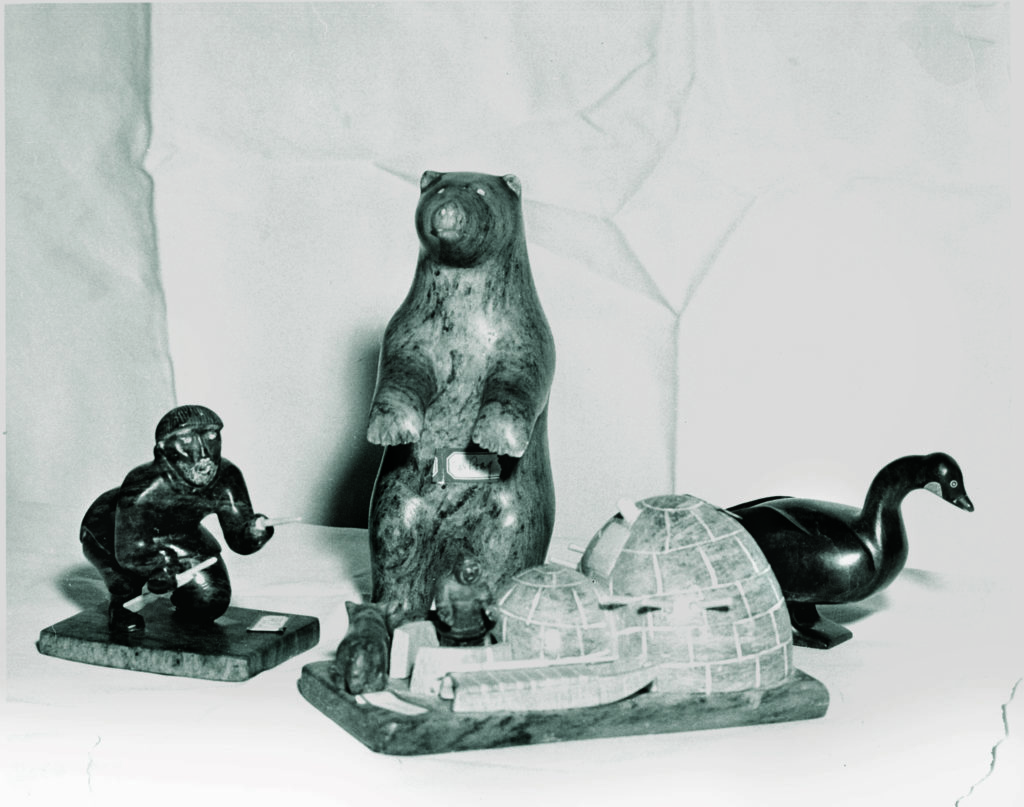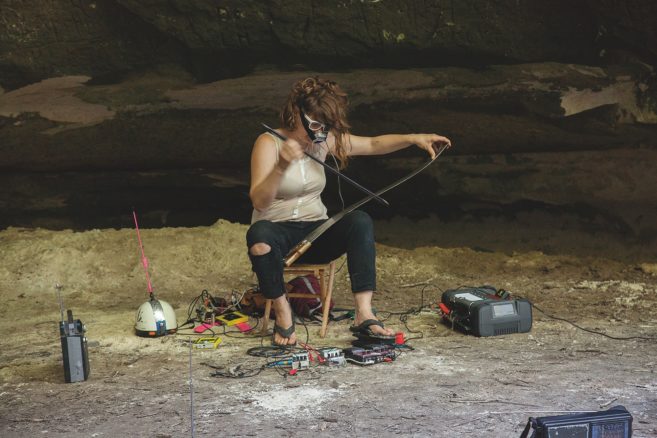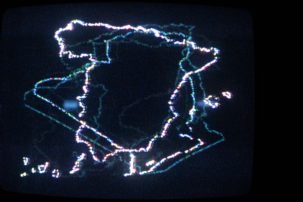On a sweltering summer’s day in 1953, a plane landed at Hamilton’s Mount Hope airport. Its passengers were a group of tubercular Inuit whose travels had begun near the Arctic Circle, around Baffin Island and Arctic Quebec. The group—described in reports as “sick and exhausted” and “apprehensive and disoriented”—stepped out of the plane onto a scorching tarmac, dressed in the fur parkas and mukluks they had been wearing when they left home.
Staff from the Mountain Sanatorium, where the group was headed to receive treatment for tuberculosis, divided them into groups based on age and gender—an especially traumatic process for mothers forced to separate from their young children. After Northern evacuees consented to travel south to receive medical care—or were coerced, if informed consent is understood by its present-day definition—they had to contend with anxiety and grief on many levels. Some children forgot their mother tongues, and scant communication between the North and South meant that some adults were not able to let their loved ones know whether they were still alive or dead.
It is more than likely that tubercular Inuit would have preferred to remain at home for treatment, but they were not given that choice. In the eyes of the government, it was dramatically cheaper and more efficient to evacuate infected members of Inuit communities to an existing sanatorium in the South rather than build a brand-new facility in the North. The Department of National Health and Welfare selected the Mountain Sanatorium as the principal location for the reception of Eastern Arctic evacuees.
Over the course of nearly a decade, as many as 1,274 infected Inuit resided at the Mountain Sanatorium. Some were away from home for years at a time. While adjusting to sanatorium life was a difficult task for any patient, it was especially jarring for those from the North. Breakfast in Iqaluit might include seal blood; in Hamilton, it was cream of wheat. To keep up morale, reduce irksome feelings of total reliance and maintain a connection with life back home, the occupational-therapy program was adapted to include soapstone carving for men and sewing and embroidery for women.
Women stitched exquisite fabric dolls wearing brightly coloured parkas, replete with fur-edged hoods. Men carved scenes from home that would have been especially interesting and attractive to southern collectors, such as Hunter with Captured Seal Under the Ice by Samwillie Mikpegak, or Polar Bear and Cub by Jobie Snowball. Since the mid-1800s, most sculpture produced by Inuit artists had been aimed at a tourist market. As scholar Heather Igloliorte has written, it is important to note that “while all around them their culture was being debased, devalued, and actively oppressed by the dual forces of colonialism and Christianity, these same values were revered, celebrated, and voraciously collected in their arts.”
Though recognized at the time as artistic products, the textiles and sculptures produced at the sanatorium were not retailed in the fine-art market, and therefore did not fetch fine-art prices. Instead, they were sold for meagre sums through the hospital shop, which recouped what had been spent on materials and tools and then took five per cent of the profits. The remaining money from sales went to the makers, who used it to purchase pick-me-ups from the canteen, such as a can of peaches (22 cents), a Coke (seven cents), lipstick (70 cents), batteries (15 cents) or a radio (25 dollars).
More than 100 of the artworks produced by sanatorium patients are included in the Art Gallery of Hamilton’s exhibition “Carving Home: The Chedoke Collection of Inuit Art.” (The Mountain Sanatorium was renamed the Chedoke General and Children’s Hospital in 1961.) The exhibition represents one part of a multi-year research project that started when a collection of sculptures kept at the site of the former sanatorium was moved to the AGH. The gallery’s position is that “understanding, presentation and interpretation of the material must be driven by the voices and knowledge of those closest to its creation.” The exhibition team includes many Inuit art specialists and even a former patient, Nancy Anilniliak, who was brought to the sanatorium at just five years old. Says Tobi Bruce, director of exhibitions and collections and senior curator at the AGH, “We see this as a living collection, not a finite holding.”
“Even with the best will in the world,” writes Shawn Selway, author of Nobody Here Will Harm You, an in-depth study of the evacuation, “uninvited meddling in the lives of others is perilous at any time and place.” Anthropologist Helle Møller, who worked as a tuberculosis nurse in three Nunavut communities in the late 1990s, suggests that the government’s interest in providing medical care to those in the North might have been partially strategic. She writes, “Before the Canadian government had realized the possibilities of the Arctic, its inhabitants were allowed to die as a consequence of contact with explorers, traders and missionaries.” Møller asserts that it was—and continues to be—beneficial for the government, in terms of maintaining continuous and intact sovereignty, to “have healthy bodies living in the north.”
Of course, tuberculosis is still present in the North—unfortunate yet conclusive evidence that diseases cannot be cured by medical care alone. Anthropologist Emily Cowall, a consultant for the AGH exhibition, points out that “present-day Nunavummiut are not receiving adequate government assistance with their housing, food and income.” As a result, the microbe that has lain dormant for decades has found hapless new hosts.
At worst, the history of the evacuation of tubercular Inuit from Eastern Arctic communities to Southern Ontario can be seen as an example of welfare colonialism. At best, it was a well-intentioned program that, despite saving lives, was clumsily executed and produced some tragic consequences.
Between 1952 and 1963, 37 Inuit patients died in Hamilton. Their graves were left unmarked for years, but in 1995 a granite stela was added close to where they are interred. The stela is adorned with carvings modelled on sculptures made by the patients at the Mountain Sanatorium. At its peak, overlooking scenes of a woman carrying a baby in her hood, and of men hunting seal, there sits an owl, perched with its wings folded in by its sides, as if it has stopped for some rest and recuperation after a long flight. It couldn’t have known, like the people taken away from their homes to a strange new climate and then ripped from life by a devastating disease, that the journey was to end here.

 Sculptures by unidentified Inuit artists at the Mountain Sanatorium in Hamilton, ca. 1950–69. Courtesy the Archives of Hamilton Health Sciences and Faculty of Health Sciences, McMaster University.
Sculptures by unidentified Inuit artists at the Mountain Sanatorium in Hamilton, ca. 1950–69. Courtesy the Archives of Hamilton Health Sciences and Faculty of Health Sciences, McMaster University.







